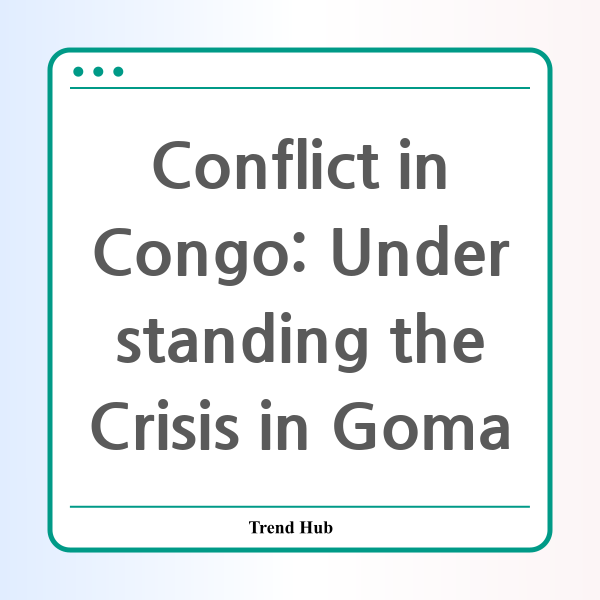* This website participates in the Amazon Affiliate Program and earns from qualifying purchases.

What happens when a city is thrown into chaos? Goma, the largest city in the eastern Democratic Republic of Congo (DRC), is currently a stark example of this question. With M23 rebels, allegedly backed by Rwanda, taking control and escalating violence in the region, the humanitarian crisis is deepening. In this blog post, we will explore the ongoing conflict, its implications, and what it means for the future of Congo and the broader African region.
For many residents, Goma has long been a refuge amid turmoil, and it is now facing one of its most severe challenges yet. Reports indicate that the streets are lined with dead bodies, and hospitals are overwhelmed with casualties from the fighting. A staggering number of civilians are attempting to flee the violence, with many roads blocked and the airport rendered unusable. This type of situation is not new for Goma; however, the current intensity of conflict raises urgent questions about security and stability in the area.
As the M23 rebels continue to gain ground, Congolese security forces are trying to mount a defense, but the situation remains precarious. With over 100 armed groups vying for control in this resource-rich region, the fight for dominance has never been more fierce. The chaos has not stayed confined to Goma; protests have erupted across the DRC, particularly in the capital, Kinshasa.
Demonstrators have taken to the streets, attacking foreign embassies in a fervent display of anger against what they perceive as external interference in their national sovereignty. The embassies of countries like Rwanda, France, and Belgium—seen as supportive of the M23 movement—have all been targeted, indicating rising tensions and a demand for accountability from the international community. Protesters are calling for global pressure on Rwanda to cease its support for the rebel group and to respect the sovereignty of the DRC.
The potential for this conflict to escalate into a broader regional war looms large as both local and international players navigate the complexities of allegiance and influence in Eastern Africa. U.S. Secretary of State Marco Rubio has publicly condemned the violence and has urged for renewed peace talks between Congo and Rwanda, stressing their importance in restoring order and stability. However, with embassies under attack and escalating military confrontations, the path to peace appears increasingly fraught.
This situation raises vital questions about the future of the DRC and the safety of its citizens. The humanitarian impact is dire, with hundreds of thousands displaced and in urgent need of assistance. With military resources stretched thin and an increasing number of civilians caught in the crossfire, how can the international community effectively intervene to support the Congolese people?
In the backdrop of a complex regional history, the DRC stands at a critical juncture. The current violence in Goma underscores the fragility of the state's governance and the potential for a larger conflict reminiscent of past wars in the region. The implications of this situation extend beyond Congo’s borders, affecting the stability of East Africa as a whole.
As we move forward, it is critical that both local and international leaders acknowledge the gravity of the situation in Goma and work collaboratively towards a peaceful resolution. The people of Congo deserve peace, security, and the opportunity to rebuild their lives free from the specter of violence.
* This website participates in the Amazon Affiliate Program and earns from qualifying purchases.